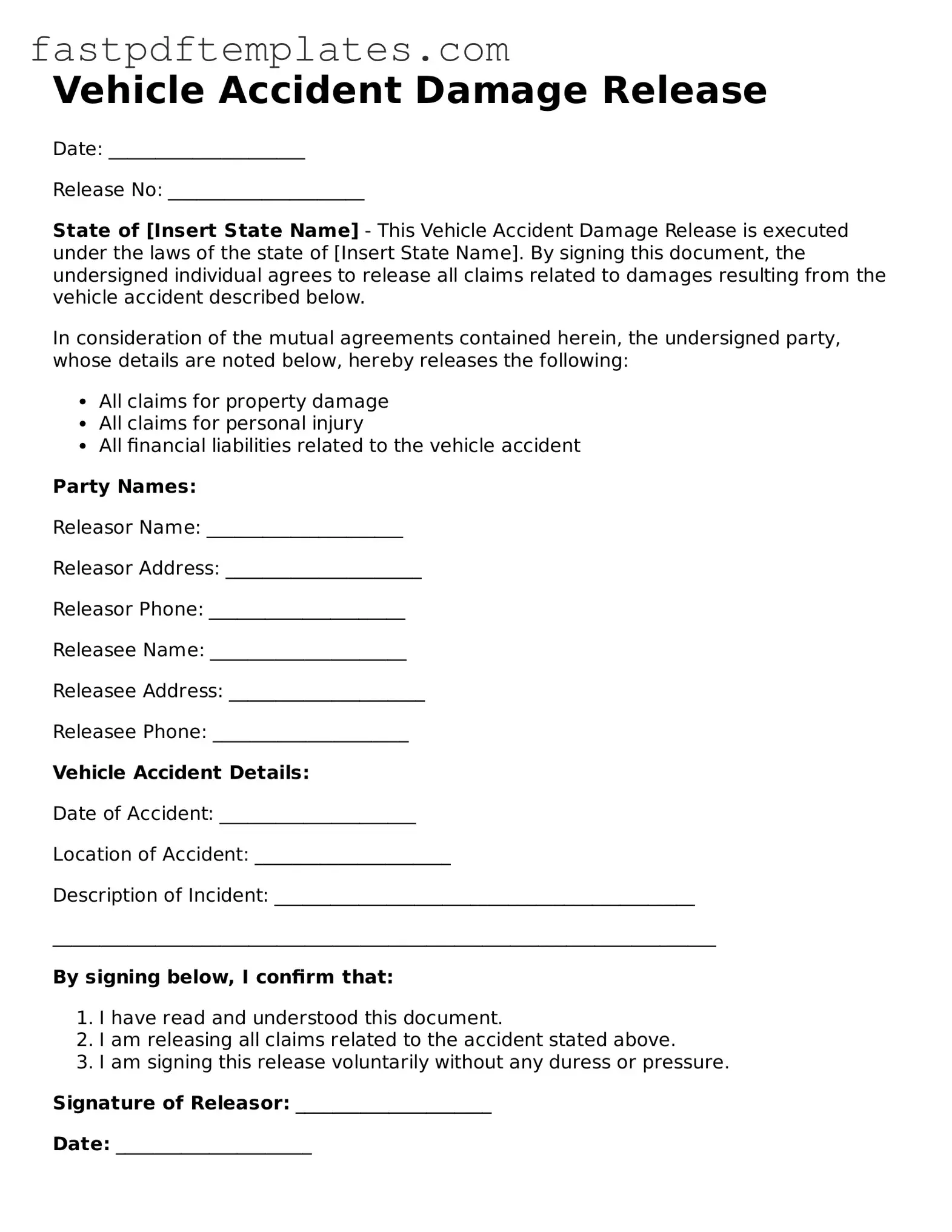Vehicle Accident Damage Release
Date: _____________________
Release No: _____________________
State of [Insert State Name] - This Vehicle Accident Damage Release is executed under the laws of the state of [Insert State Name]. By signing this document, the undersigned individual agrees to release all claims related to damages resulting from the vehicle accident described below.
In consideration of the mutual agreements contained herein, the undersigned party, whose details are noted below, hereby releases the following:
- All claims for property damage
- All claims for personal injury
- All financial liabilities related to the vehicle accident
Party Names:
Releasor Name: _____________________
Releasor Address: _____________________
Releasor Phone: _____________________
Releasee Name: _____________________
Releasee Address: _____________________
Releasee Phone: _____________________
Vehicle Accident Details:
Date of Accident: _____________________
Location of Accident: _____________________
Description of Incident: _____________________________________________
_______________________________________________________________________
By signing below, I confirm that:
- I have read and understood this document.
- I am releasing all claims related to the accident stated above.
- I am signing this release voluntarily without any duress or pressure.
Signature of Releasor: _____________________
Date: _____________________
Witness Name: _____________________
Witness Signature: _____________________
Date: _____________________
